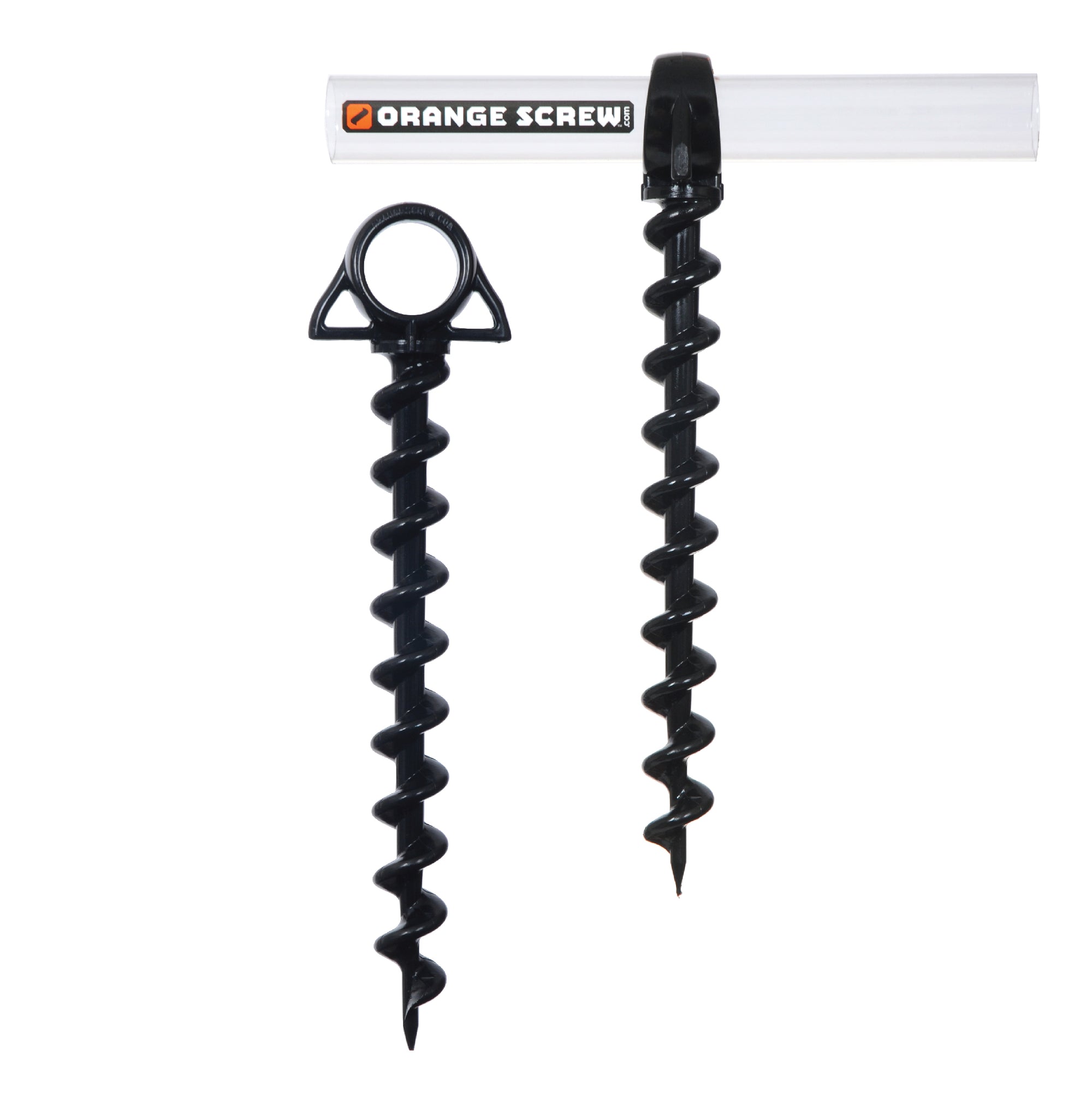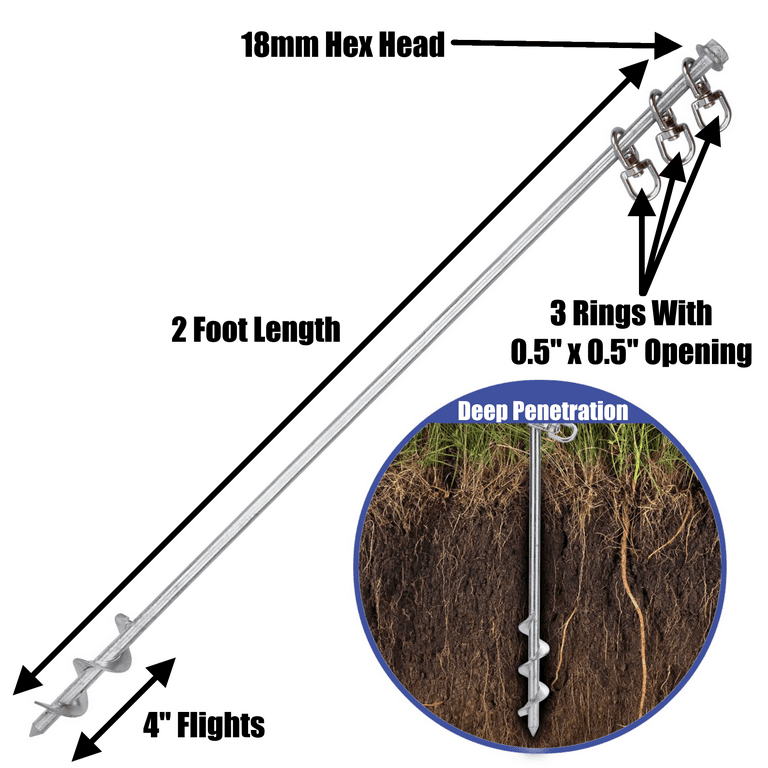Factors to Consider Before Purchasing a Durable Ground Anchor
Factors to Consider Before Purchasing a Durable Ground Anchor
Blog Article
Explore the Different Sorts Of Ground Anchor for Your Next Task
When starting a construction or landscaping project, comprehending the different kinds of ground supports offered is important to making sure both stability and durability (Ground Anchor). From auger anchors, which stand out in diverse dirt problems, to stake supports created for short-term installations, the alternatives are numerous. Furthermore, concrete and screw anchors present unique advantages in details circumstances, while deadman supports are customized for applications calling for resistance to lateral forces. The option of a suitable support kind can dramatically influence the total success of your project, motivating more expedition right into their respective benefits and applications.

Auger Anchors
Auger supports are a popular choice in various building and landscaping tasks due to their special layout and reliable anchoring abilities. These anchors contain a helical screw-like shaft that is driven into the ground, allowing for a secure and steady hold. The spiral style facilitates simple setup and optimizes resistance against lateral pressures, making auger supports particularly reliable in applications such as fencing, temporary structures, and erosion control.
The installment process of auger anchors is fairly simple. They can be by hand or mechanically mounted, depending on the dimension and called for deepness. This versatility enables for their use in diverse dirt conditions, from sandy to clayey surfaces. Auger anchors can be easily gotten rid of and recycled, which includes to their cost-effectiveness and sustainability.
Among the substantial advantages of auger supports is their capacity to distribute tons uniformly across the surrounding soil, lowering the risk of dirt disturbance and reducing ecological impact. Furthermore, they are much less prone to heaving or loosening over time contrasted to traditional securing approaches. As a result, auger anchors are a superb selection for projects needing long lasting and reliable anchoring services.

Risk Anchors
When it involves protecting structures in a range of outside applications, risk anchors provide a straightforward and trustworthy service. These supports are generally built from resilient materials such as steel or light weight aluminum, created to withstand ecological anxieties while supplying optimum security. Their basic layout allows for quick setup, making them a perfect choice for short-lived or long-term anchoring requirements.
Risk anchors are particularly valuable in securing outdoors tents, canopies, and various other lightweight structures against wind and climate. They function by being driven right into the ground at an angle, developing a solid hold that stands up to pull-out forces - Ground Anchor. The efficiency of stake anchors relies on numerous factors, consisting of soil kind, wetness content, and the angle of installment
For included protection, several stake anchors include add-on points for straps or ropes, allowing for tension modifications as essential. In applications such as landscaping or building, they can properly maintain equipment or structures on unequal surface. In general, risk anchors give a functional and cost-effective option for protecting different outside setups, making them a favored selection for specialists and DIY fanatics alike.
Concrete Anchors
Concrete supports provide a durable remedy for protecting structures to concrete surface areas, making sure stability and safety in various applications. These anchors are crucial for projects varying from residential buildings to large industrial installations. They are available in various types, consisting of expansion supports, sticky supports, and undercut supports, each designed for particular load needs and environmental problems.
Glue supports make use of high-strength epoxy or material to bond the anchor to the concrete, offering exceptional load-bearing abilities, especially in split concrete situations. Undercut anchors create a special shape within the concrete, offering remarkable holding power, especially more in applications where tensile tons are widespread.
Selecting the proper concrete support entails taking into consideration aspects such as the weight of the load, the problem of the concrete, and environmental conditions. Appropriate installment methods are crucial to ensure optimum efficiency and dependability. When carried out properly, concrete supports substantially improve the architectural stability of numerous projects, making them important in modern building practices. Understanding the specific requirements of your task will aid in selecting the right kind of concrete anchor for the task.
Screw Anchors

Screw supports are a versatile fastening service that can be efficiently used in a selection of applications where traditional concrete anchors might not be adequate. These supports consist of a helical style that allows them to be conveniently driven into the ground, making them excellent for use in dirt and various other substrates. Their unique framework supplies superb holding power and resistance to pull-out pressures, making them appropriate for various projects, from landscaping to architectural assistance.
One of the primary benefits of screw supports is their simplicity of installment. They call for very little equipment and can commonly be installed without the demand for excavation, which conserves both time and labor costs. Additionally, screw supports can be gotten rid of and recycled, offering a sustainable option for short-lived applications.
Screw supports are particularly beneficial in locations where dirt conditions are challenging, such as sandy or loosened dirts. Their ability to be set up at varying midsts allows for customization based on details task demands. On the whole, screw anchors supply a efficient and reliable anchoring approach, making them a superb selection for contractors and engineers seeking effective services for their tasks.
Deadman Anchors
Deadman supports serve as a robust solution for maintaining structures in tough conditions, particularly where conventional anchoring techniques might fail. These anchors consist of big, hefty things buried underground, which create resistance versus lateral pressures. The style commonly entails a horizontal component, such as a block of concrete or a steel plate, buried in the you can find out more dirt, to which cables or bands are affixed.
The performance of deadman anchors exists in their ability to disperse lots over a larger location, lowering the danger of failure in unstable dirt problems. They are particularly helpful in applications such as keeping wall surfaces, temporary frameworks, and slope stablizing, where dirt movement can jeopardize the honesty of the structure.
Installation of deadman supports requires mindful preparation to guarantee they are positioned at the correct depth and positioning, maximizing their load-bearing capability. While they might require more labor and material than lightweight supports, their reliability in negative conditions makes them important for long-lasting projects. Moreover, deadman supports are functional and can be adjusted to different applications, making them a best choice for engineers dealing with special difficulties in their jobs.
Final Thought
Auger supports stand out in diverse soil conditions, while risk anchors suit short-term applications. For concrete surfaces, expansion and sticky anchors give trusted choices, and screw supports use convenience in difficult surfaces.
Additionally, concrete and screw anchors existing one-of-a-kind advantages in specific scenarios, while deadman anchors are customized for applications requiring resistance to side forces - Ground Anchor.Auger supports are a popular choice in different building and landscaping projects due to their unique layout and reliable securing abilities. They come in different types, consisting of expansion supports, sticky anchors, and undercut anchors, each developed for particular load requirements and environmental problems
Sticky supports utilize high-strength epoxy or material to bond the Going Here anchor to the concrete, supplying premium load-bearing abilities, especially in broken concrete scenarios. Generally, screw supports provide a reliable and reliable anchoring technique, making them an outstanding selection for contractors and engineers seeking efficient remedies for their tasks.
Report this page